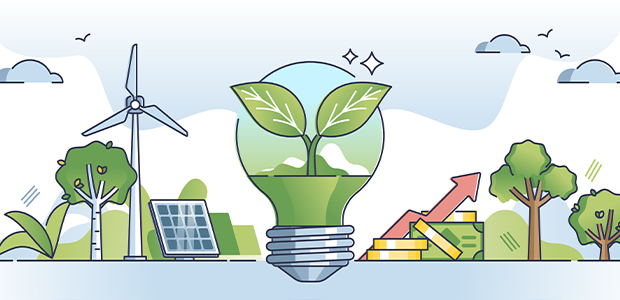
Investment bank predicts 2024’s most influential climate tech trends
Clean energy, hydrogen, carbon capture and alternative proteins will all attract significant investment over the next year, says Marion Jeng, Associate at DAI Magister
2023 proved a challenging 12 months for the climate vertical, with private equity and grant funding for climate tech startups falling by over 40% compared to the previous year. However, in 2024 investment levels are set to increase, as accumulated public and private capital gets deployed and government support across various sectors ramps up.
Marion Jeng, Associate at DAI Magister, outlines the climate tech innovations poised to profit from an investment spike in 2024.
Clean energy to dominate investment landscape
Energy sector investments totalled approximately $3 trillion in 2023, including 50% of these investments channelled into clean energy initiatives.
Jeng commented: “The trend of investment in clean energy initiatives is likely to persist in 2024, further bolstered by the European Union’s unwavering and increasing policy support.
“While previous clean energy investments predominantly focused on infrastructure development, we see the next wave pivoting towards software-driven solutions that optimise energy systems and streamline operations through AI, Big Data, and IoT. Additionally, with the proliferation of renewable energy, we can expect continued interest from investors in energy storage solutions.”
Hydrogen
According to Jeng, as hydrogen projects transition from the exploratory to the developmental phase, the size of individual investments will increase.
“We anticipate larger transactions and investments as hydrogen projects move from initial pilot projects into a growth and scaling phase. Specific regions in Europe, like the Nordics and Scotland, will leverage their regional advantages and benefit from government support.
“While established projects graduate to growth and look to scale, more nascent projects like Waste2H2 and Turquoise Hydrogen will still need to prove their bankability to potential investors to attract the necessary funding and navigate to the next phase.”
Carbon Capture and Storage
Carbon Capture and Storage (CCS), particularly when used to generate synthetic fuel, is emerging as a critical avenue for meeting the goal of limiting temperature increases to 1.5 °C.
Jeng continued: “Until now, we’ve seen limited adoption of CCS technologies due to a lack of scalability of CCS projects, with only 0.1% of carbon dioxide removal from the atmosphere attributed to these technologies. However, a potential reduction in technology costs will make CCS projects more scalable and attractive for investments. With scalability barriers gradually fading, we anticipate a surge in investment in this crucial vertical in 2024.”
Alternative proteins
With livestock farming responsible for 15% of global greenhouse gas emissions, investors are considering alternative sources of protein that are less damaging to the planet.
“The alternative proteins market is poised for significant growth, fuelled by several key drivers. Lifestyle shifts and the pivotal role of these proteins in combating climate change are among the primary factors propelling this growth. Alternative protein is not a passing trend; it has become a significant focus for investors.”
Jeng concluded: “In today’s climate technology landscape, many firms still operate on a relatively modest scale. Considering the current capital constraints, larger strategic companies are well-positioned to acquire smaller firms that have achieved a certain level of growth and strategic value.
“It is undeniable that, as the market unlocks, the underlying tailwinds of climate tech companies in key verticals mentioned above will make this vertical increasingly attractive to investors.”

